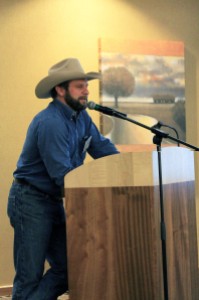Eastern Montana Updates from MSGA Directors
Southeastern District Update from Terry Haughian, Kinsey
I hope everyone has had a great summer. So far, this area has not had any real bad hail or fires. Last year this whole area was hit hard by hail, the King Valley was hit twice and the Circle County hit hard. We have had a great grass year and a great year to refill reservoirs and pits. It looks like a very good “perfect storm” year with calf markets as good as they are.
I have visited with several producers who are interested in joining MSGA because of all the issues concerning bison, water rights, sage grouse, etc. I plan to follow up after haying season is over. The good markets should help with membership this year. I believe the mid—year meetings at different venues around the state help people realize that MSGA is alive and well and a viable entity for them to take part in. I encourage all members to converse with producers in your area at the fairs, rodeo and events going on nearby. Happy Pre-Vac and shipping to all!
Northeastern District Update from Lee Cornwell, Glasgow
Things in Northeastern Montana have been busy with hay and harvest this summer. Producers have enjoyed good weather for the season as most dry land hay is already put up and the combines are rolling. Ranchers should enjoy a good Fall weaning season as calf prices are expected to remain near record highs.
Many producers have been concerned about bison management discussions throughout the state and MSGA has continued to be involved in these. Rail transportation for many grain crops has seen quite a backlog this year as farmers compete with other commodities and oil traffic. These backlogs seem to be easing up as harvest progresses and grain needs to be transported.
We have continued to be involved in discussions with the Board of Livestock concerning the DOL budget process and I believe the subcommittee focusing to correct these problems is a positive step in the right direction.
I am enjoying the opportunity to be involved in my first year on the MSGA Board of Directors and look forward to being involved in the many meetings we have scheduled this Fall season.





















